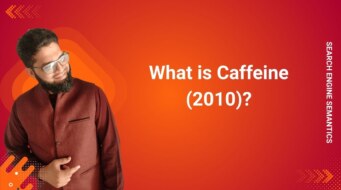What Is the Google MUM Algorithm Update (2021)?
The Google MUM (Multitask Unified Model) Algorithm Update, announced in May 2021, represents a significant leap in artificial intelligence (AI) and search processing. MUM is designed to understand, interpret, and generate language across multiple formats such as text, images, and video, enabling Google to provide richer, more accurate answers to complex queries.
Unlike previous updates like BERT (2019), which primarily focused on natural language processing (NLP) with text, MUM introduces multimodal capabilities, allowing Google to process and analyze different types of content—including text, images, videos, and even spoken words. This makes it easier for Google to provide in-depth, multi-step answers that traditional search engines struggled to interpret.
Why Was the Google MUM Algorithm Introduced?
Google developed MUM to overcome limitations of traditional, keyword-based search models, addressing challenges in delivering comprehensive search results. Here’s why it was needed:
1. Handling Complex, Multi-Step Search Queries:
Previously, users had to conduct multiple searches to piece together information. MUM allows Google to process a query in one go, analyzing multiple content types to provide a complete answer.
For example:
Before MUM: A user planning a hiking trip to Mount Fuji might search separately for:
- “Best time to hike Mount Fuji”
- “What gear do I need for Mount Fuji in October?”
- “How does Mount Fuji compare to other hikes?”
After MUM: Google processes all aspects at once—articles, images, and videos—and provides a comprehensive answer in a single search.
2. Understanding and Translating Information Across Languages:
MUM is 1,000 times more powerful than BERT, capable of translating insights from various languages to provide a diverse set of answers. This makes non-English content accessible to English-speaking users.
For example:
If hiking gear recommendations for Mount Fuji are written in a Japanese blog, MUM can translate and display this information for English-speaking users.
3. Processing and Understanding Multiple Content Formats:
MUM introduces multimodal search, allowing Google to analyze text, images, videos, and audio to provide well-rounded search results.
For example:
A user uploads an image of a hiking boot and asks, “Can I use this for hiking Mount Fuji in winter?”
MUM analyzes the image and compares it with expert hiking recommendations to provide a detailed answer.
How Did the MUM Update Change SEO?
The MUM update fundamentally reshaped SEO by prioritizing AI-driven content interpretation. Here are the major changes in SEO strategy:
1. Shift From Keyword-Based Search to AI-Driven Search:
Before MUM, SEO focused heavily on keyword optimization. After MUM, Google prioritized context, intent, and multimodal content over exact keyword matches.
For example:
Before MUM: A blog post targeting “best hiking gear” would need to use exact-match keywords like “best hiking boots” or “top hiking backpacks” to rank.
After MUM: Google understands comparative analysis, meaning content explaining why one type of hiking boot is better for specific terrains will rank higher—even without exact-match keywords.
2. Importance of Multimodal Content (Text, Images, Video, and Audio):
MUM can interpret not just text but also images, videos, and audio. Websites with diverse multimedia content (e.g., infographics, tutorial videos, and podcasts) will rank higher.
For example:
A fitness blog that includes video demonstrations of exercises is more valuable to MUM than a plain-text article.
3. Expanded Global Search Capabilities and Multilingual SEO:
MUM enables Google to process content in multiple languages, meaning websites with multilingual content can now reach a global audience more effectively.
For SEO, this means:
Multilingual SEO is now essential. Websites should optimize content in multiple languages to cater to different regions and cultures.
4. Increased Focus on Contextual and Expert-Driven Content:
MUM reinforces Google’s E-A-T (Expertise, Authoritativeness, Trustworthiness) principles. Content that is research-backed and expert-driven will rank higher.
For example:
Generic articles about travel tips may not rank well.
Well-researched, expert-driven content from professional bloggers or local guides will perform better.
What Are the Key Features of the MUM Update?
1. Multimodal Understanding:
MUM analyzes text, images, videos, and audio simultaneously, making it capable of providing richer answers.
For example:
A user can upload a photo of a mountain and ask, “What’s the best way to climb this peak?”
MUM processes the image, identifies the mountain, and suggests the best hiking strategies based on expert advice.
2. Cross-Language Search Processing:
MUM can extract insights from non-English sources and translate them, making global content more accessible.
3. Deep Contextual Understanding:
MUM understands entire topics rather than just focusing on individual keywords, making search results more relevant and comprehensive.
How Can Websites Optimize for the MUM Algorithm?
To optimize for MUM, websites should focus on:
1. Creating Rich, Multimodal Content:
Include images, videos, and interactive content alongside text.
Provide visual storytelling and step-by-step guides to enhance engagement.
2. Optimizing for Contextual and Long-Form Content:
Write in-depth, expert-driven content that answers complex queries.
Focus on search intent rather than just keywords.
3. Implementing Multilingual and Localized SEO:
Translate content into multiple languages to expand reach.
Use culturally relevant examples and localization strategies to improve relevance.
4. Enhancing Structured Data and Schema Markup:
Use structured data (schema.org) to help Google understand multimedia content.
Optimize videos and images with descriptive metadata, alt text, and captions.
Final Thoughts on MUM (2021)
The Google MUM Algorithm Update (2021) introduces a revolutionary approach to search by combining AI-driven understanding, multimodal search, and global content interpretation. Websites focusing on high-quality, contextually relevant, and multimedia content are best positioned for success in the MUM era.
Would you like additional tips on optimizing for MUM, or want further guidance on the latest SEO techniques?
Want to Go Deeper into SEO?
Explore more from my SEO knowledge base:
▪️ SEO & Content Marketing Hub — Learn how content builds authority and visibility
▪️ Search Engine Semantics Hub — A resource on entities, meaning, and search intent
▪️ Join My SEO Academy — Step-by-step guidance for beginners to advanced learners
Whether you’re learning, growing, or scaling, you’ll find everything you need to build real SEO skills.
Feeling stuck with your SEO strategy?
If you’re unclear on next steps, I’m offering a free one-on-one audit session to help and let’s get you moving forward.




